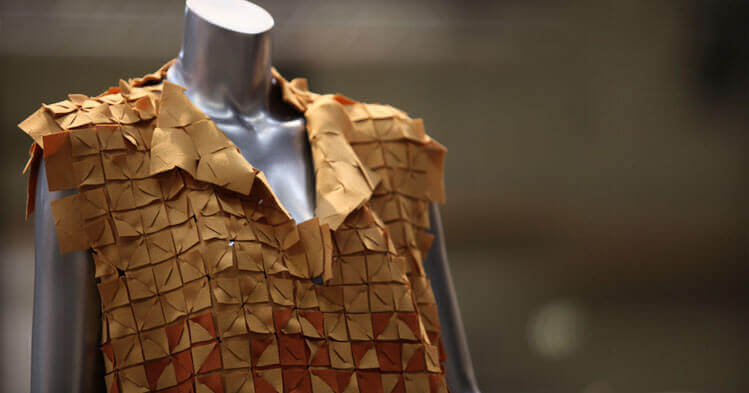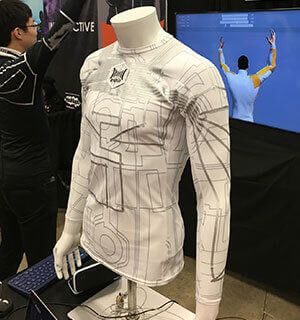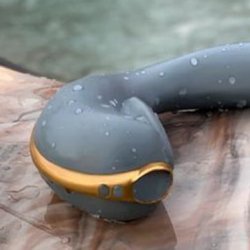Protective Threads: Can ‘Smart’ Clothing Really Keep Women Safe from Abuse?
Future fashion will ideally offer security, style—and pleasure.

‘Fashion is the armor to survive the reality of everyday life.’ —Bill Cunningham
Look at the debates that have popped up regarding the coming impact of technology on human sexuality and you’ll see a lot of concern about the impact of robots, the security of Internet-of-Things devices, and even the continuing bias against sex tech itself—especially when they are designed for, or created by, women.
Amid these, though, is the one that arguably deserves much greater attention: how we might be able to use these and other coming innovations to protect female-identified people from sexual assault.
Which is a polite way of trying to prevent rape .
A few steps in the right direction
There have been some attempts to address this, including using Blockchain technology as a way to certify consent. As we have previously reported, however, there are some deep flaws in this approach . But there is some positivity in that Blockchain could be used to make a safer environment to report when a sexual assault occurs.
Similarly, some developers have been working to make the consensual sharing of explicit images more secure; creating a tool to hopefully protect against revenge porn.
But just as sexual assault and futuresex technology needs greater discussion, we also have to step away from the screens and keyboards and get out to where women are far-too-often harrassed, insulted, threatened, and physically attacked.
We need to find a way to try and make the streets safe.
‘The Dress for Respect’ project
Fortunately, some who have been looking at this very subject. Last month, for instance, Ogilvy, a Brasilian-based advertising company, used a special dress fitted with a variety of electronic sensors to report when women were touched without permission.
The Dress for Respect project, which was sponsored by Schweppes, involved three different women, each wearing the sensor-laden dress while attending a party.
Measuring location on the body as well as intensity, the data was then wirelessly transmitted a nearby computer for real analysis: revealing that all three women were inappropriately, and non-consensually touched 157 times in a little less than four hours.
These contacts were then displayed on a visual map: showing details of each one. To be clear about the intentions of the project, each woman responded to each when possible, directly addressing the men responsible.
While the project was done in Brazil and focused on a club environment, it still clearly demonstrates the reality that this kind of casual sexual assault is horrifically common for far too many women: no matter the country, no matter the situation.
Security as well as pleasure

So what can we, technologically, do to try and prevent these kinds of unwanted, non-consensual behaviors?
One of the most effective could be right there with the Dress For Respect project: manufacturing clothing that would measure and most of all report when someone touches another person without permission.
As sensors become smaller and more accurate it would be a relatively simple matter to integrate a suite of them into a garment. On the software side, a program could then be created that would catalog each unauthorized touch: recording where the touch was made, both on the body as well as geographically.
This would allow the wearer to make an unequivocally accurate report if they so desired: especially when backed up with Blockchain technology. The system might possibly even be connected to Internet-of-Things devices and social media so it could know not just the aforementioned where but also who.
The clothing could also be linked to emergency services so if any contact was too severe, matched to a pattern that could be indicative of sexual assault or if more than one sensor is damaged, it could send an immediate alert to the police.
There’s even the possibility that specially located micro-cameras would be part of the garment, snapping images to add more evidence to the report.
A smart dress
 On the farther-future kind of things, clothing might even directly protect the wearer. Fashion designer Anouk Wipprecht approached this artistically with her Spider Dress that physically changed according to the wearer’s mood.
On the farther-future kind of things, clothing might even directly protect the wearer. Fashion designer Anouk Wipprecht approached this artistically with her Spider Dress that physically changed according to the wearer’s mood.
Add smart materials to this idea and it’s not hard to picture a garment that would react when threatened: creating protective armor, flashing an illuminated warning, or generating some form of spiked deterrent.
Though while these are all interesting concepts what needs to happen is less technological and more social, more cultural .
We need to evolve
Humanity, without blinking, needs to take a good long look at itself and how it has treated—and continues to treat—women-identified people: that too many live in fear for their emotional and physical safety at work, at home, and especially when they are out in public
Not to dismiss their impact, but movements like #metoo are the barest of starts. What needs to happen is a total change in the way we view sex and especially consent.
We can begin by calling out those who think that sexual assault, in whatever form it might take, is just boys-will-be-boys: by standing firm against them, showing them the impact of their actions, and working to prevent these kinds of behaviors from happening again.
Things like a wired-dress could very well be a solution to some aspects of our broken society but even if successful and commonplace it always be a sign that we, as a society, have failed.
For when technology like this is unneeded is the day we will finally make that critical step from a society with its roots in toxic masculinity and instead one that embraces empathy and respect—especially in regards to sex.
Image sources: Lego Dress, Eva Rinaldi, Phil Whitehouse, Rob Kall
Leave a reply
You must be logged in to post a comment.

















